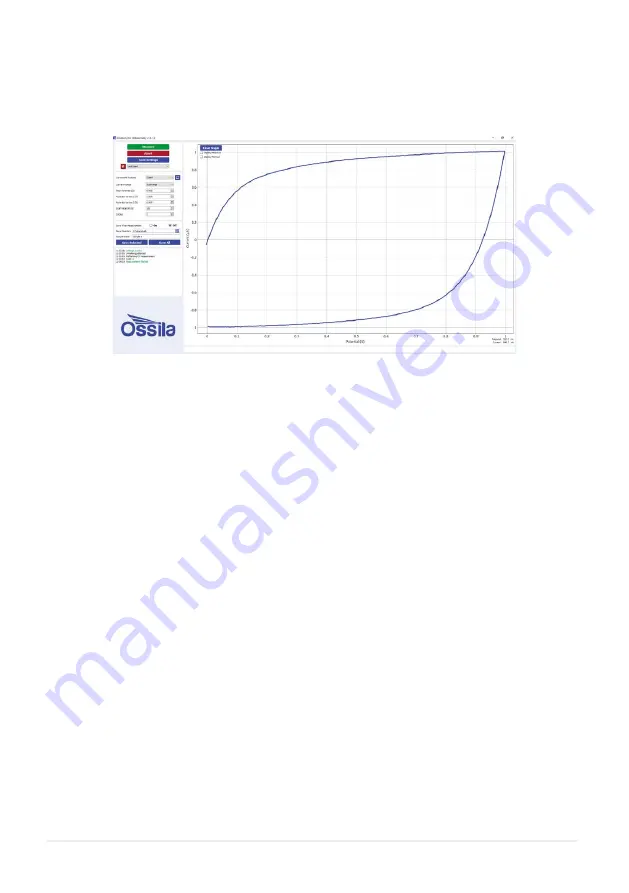
20
For the WE3 connector, if the Potentiostat is working and the measurement has been set up correctly, you
will see the response shown in
Figure 9.12
.
WE1 and WE2 will give responses that are the same shape as WE3, but with maximum currents of
approximately 30 nA and 100 nA respectively. WE4 is a simple resistor and will produce a straight line from
0 to 1 μA when performing a scan from 0 to 1 V.
Figure 9.12.
Example voltammogram for WE3 on the Test Cell Chip.
Here we will give an example on how to prepare a simple electrochemical cell to take a measurement of
ferrocene (Fc), which is the standard reference used for cyclic voltammetry.
(I) Before Starting
We recommend switching on the Potentiostat 30 minutes prior to use. This allows it to warm up and reach a
stable temperature, ensuring a stable measurement.
Furthermore, ensure that all apparatus, solvents and electrolytes are dry. This is because the presence
of water and its redox by-products may reduce the solvent potential window or react with the solvent or
analyte.
(II) Clean and Dry the Electrochemical Cell and Electrodes
The cell and electrodes should always be thoroughly rinsed immediately after each experiment with the
solvent that was used in your electrolyte. Always set the cell to dry, preferably in an oven, before you prepare
your electrolyte. This helps reduce contamination of your solution.
9.4 Performing Cyclic Voltammetry of Ferrocene
9.4.1 Preparing an Electrochemical Cell
Содержание T2006A
Страница 25: ......





















